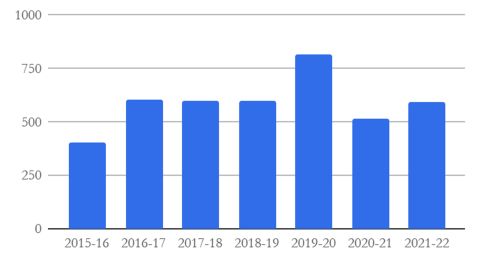Another year of variable and even extreme weather has passed us by in the Minervois. Each year has its own peculiarities and 2022 was no exception, marked by extremes of heat and dryness over the summer months. Somewhat akin to 2003, another hot and dry year that produced a fantastic vintage.
But behind such extreme weather, which causes alarm and frustration to many a vintner, can hide a silver lining. Hot and dry years are most times ones of rich, concentrated and clean harvests, albeit in limited quantities, and wines that are ready to be approached early but can also be laid down for many a year with confidence.
Strong vines
Vines, which many a wine-drinker may not appreciate, are hardy plants, capable of surviving hot and dry conditions. Remember that most varieties trace their origins back to Mediterranean regions (Spain, Greece, Iran/Iraq), regions not characterised by plentiful rain and moderate temperatures. Deep roots on older vines will search for water below one metre, sometimes even more than 10 metres, while younger vines can survive by closing down and not producing energy-sapping grapes for a number of years.
Deep water
Critical in this is the presence of water below ground, supplemented in most years by winter/spring rains. And what most observers and vignerons appear to have forgotten over the winter of 2021 and spring of 2022 in our region of the Minervois is that more rain fell over these crucial months than over the same period of 2020/2021. So, in spite of four months (June–September) of heat and little rain (which arrived at the end of September), the vine roots were active in finding water below ground – and enough of it.
Combine this with above-average temperatures, and one has positive conditions for a quality harvest. Which is what we had in 2022.
Risks avoided
The year was also characterised, as in most years, by risks of frost, disease and hail. Frost is always a threat up to the end of April. It was notable in 2021, when swathes of more northern areas were decimated by a week of below-zero temperatures. Some damage was seen in low-lying areas in the Minervois in 2022 but not of the same severity as in 2021. St-Jacques suffered little damage.
After hail, disease (grey powder rot in particular) is the next hurdle to cross, as warmer temperatures combine with moisture to generate conditions for the emergence of fungal growth. But warm and dry conditions were setting in, choking off any support for disease. In subsequent months and throughout summer, to the advantage of organic practices in 2022, the dry conditions did the work of spraying by inhibiting any fungal growth. These conditions favoured the Languedoc, an area of high incidence of organic protocols.
And hail was our final headache, causing loss of sleep the minute we heard thunder. A late-summer phenomenon and very localised, it can be devastating both for the year in question and for subsequent years, as the vines have to recover from structural damage. We heard much thunder over the summer of 2022 but had no hail. Another miracle.
And although fires were much in the news, they occurred mostly in the south-west of France and little in the Languedoc this year. Drought conditions resulted in greater public awareness.
To conclude
Having survived most of what nature could throw at us, the Minervois has emerged with a good, if not excellent vintage. Comparable to 2003 (which by the way are still highly drinkable at the upper quality end) for many with longer memories.
Overall a high-quality vintage at St-Jacques, notably in reds. Healthy and ripe fruit, true to its traditional character. And, given the summer dryness and heat, benefiting its organic status. Little spraying was exercised.
Both whites and rosé-oriented reds were picked some two weeks earlier than normal, thus reducing any risk of grape shrinkage from the continuing drought, otherwise the vines would sup from their own fruit to survive. The Viognier, Marsanne and Roussanne all threw off ripe and flavoursome grapes, exhibiting vibrancy and tension in the first tastings. As did the first rosé samples.
Reds emerge tops in 2022. Somewhat 'tight' in early samples, they should relax within the year, losing their initial juvenile character. They exhibit expressive fruits, rich and jammy, and with fantastic ageing potential. Volumes are no more than in 2021, given the lack of precipitation during maturation. Enough to survive but with that element of stress which correlates with and contributes to high quality. Grenache is fantastic (the highest quality of the reds), Carignan is exceptional (but we don't have much acreage remaining), while the Syrah, our dominant planted red, is the most sensitive of them all to drought and was thus restrained in volume.
So, let's hope 2023 weather is not a repeat of 2022, unless winter/spring rains replenish the water tables. As of early December, some restoration is in progress but we'll have to wait until Easter 2023 before confidence is established.
All photos courtesy of Ch St-Jacques d'Albas.















